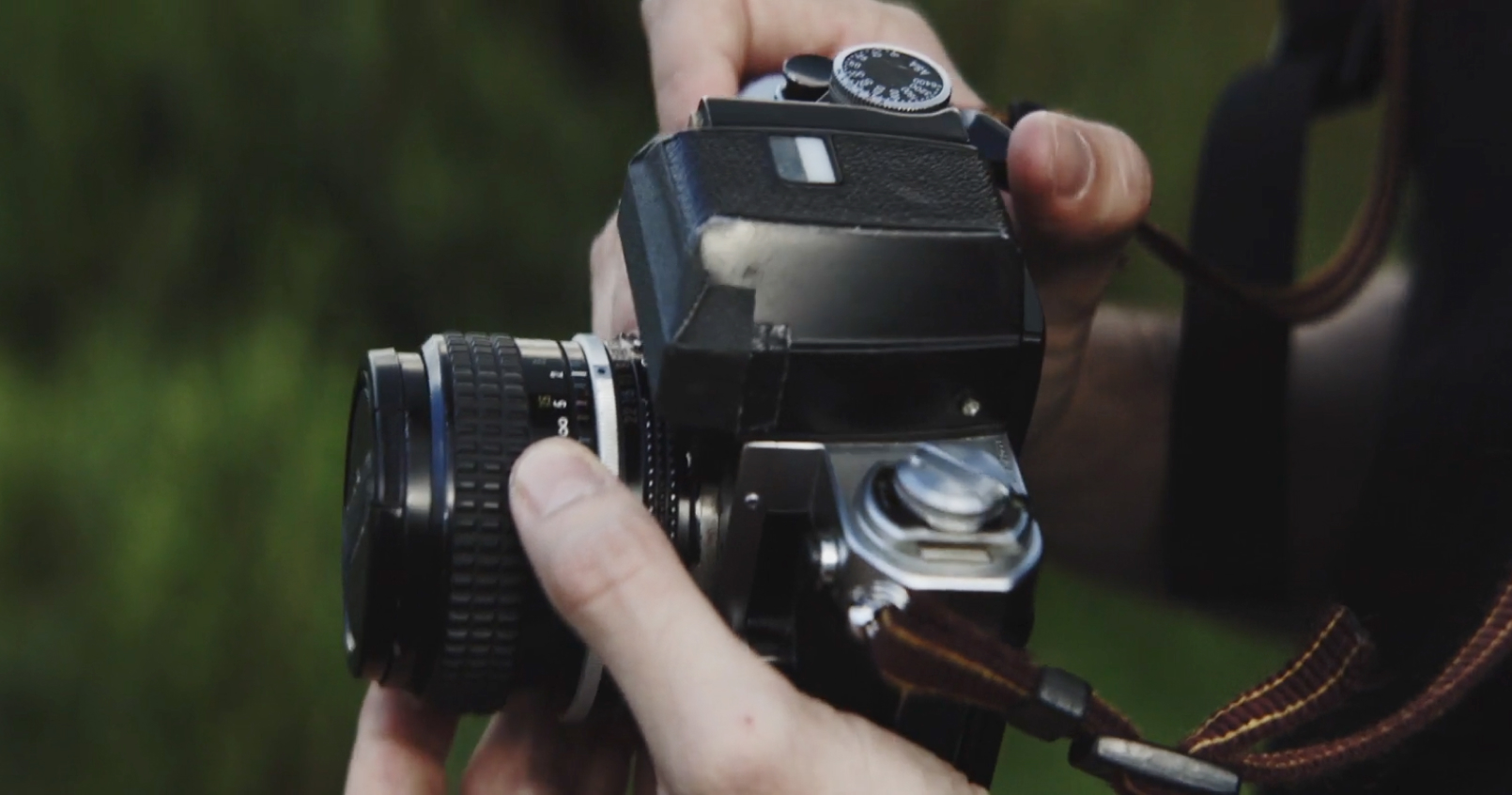Highlights
Table of Contents
Explore article topics
Today, it’s almost impossible to imagine not having autofocus (AF) in your camera if you’re a photographer. Unless you’re a manual vintage lens purist, autofocus has become inherent to photography. Even filmmakers and videographers, more reluctant about using autofocus years ago, have embraced this technology, making their lives easier, especially under certain conditions.
The history of the autofocus
However, although many take this feature for granted, autofocus was not incorporated into mass production until 1977 with the Konica C35 AF. Leica developed prototypes before, but manual focus was the norm until the leading players in the industry standardized the system. In 1978, the Polaroid SX-70 was the first single-lens reflex camera to feature autofocus. Still, this was in the 80s when the first SLR 35mm camera appeared (the Pentax ME-F). In that decade, Nikon, Canon, and the rest of the brands switched to electronic mounts, allowing full communication between lens and body.
2 AF systems
Brands continued developing the 2 primary AF systems in photo and video cameras: phase detection and contrast detection.
Phase detection
Faster but requires a more complex system to work accurately.
Contrast detection
Needs more time to work, but the mechanism is not as complicated since the information is taken from the electronic image of the scene.
DSLRs had phase detection autofocus, making them faster and more accurate than mirrorless cameras, which used contrast-based detection. However, most cameras nowadays use hybrid AF, taking advantage of both systems.
Each brand has developed its technology, like Canon, with its Dual Pixel AF. Continuous AF and eye detection technology have made creators’ lives easier, allowing them to film and take pictures without worrying about focus.
Types of autofocus
Let’s introduce the 2 autofocus modes available in most cameras: single autofocus and continuous autofocus.
Single autofocus
Single autofocus stops once it focuses on the subject. After that, you take the picture or release the button to focus again. This mode is great for static subjects.
Continuous autofocus
For moving subjects, however, it’s better to use continuous autofocus. If you are photographing or filming moving subjects like animals, kids, sports, etc., this mode will continuously adjust the focus to ensure a sharp image.
Who can use autofocus?
Photographers
Almost all photographers will benefit from AF. As mentioned, continuous autofocus is a must for nature, sports, events, and children’s photography. In situations where you need to be quick, such as street photography, autofocus will make the difference between getting a picture or not.
If you are a photographer working in a controlled environment, such as product photography, or an artist who loves manual focus, you can live without autofocus. However, the rest of us will need it.
Filmmakers
There is widespread belief among some filmmakers that you should not use autofocus. ‘Real filmmakers don’t use autofocus.‘ This is a shallow statement that considers only certain kinds of filmmakers.
Of course, pulling focus is an art and a skill that will benefit any filmmaker. In a controlled environment, with a crew and a focus puller helping you, the human touch and rhythm—even with its imperfections—can’t be replaced by an autofocus system.
Autofocus has come a long way over the years. The level of precision nowadays is almost scary. Also, wedding, nature, and sports filmmakers, content creators, and self-shooters… are also filmmakers, aren’t they? So, a solid autofocus system will be the only way to get the shot in certain situations.
Documentary, event, and wedding filmmakers
Although experienced camera operators love to focus manually, technology can help us in uncontrolled situations. Continuous autofocus will determine whether we get the shot or miss it for some b-roll (crowds, people moving, animals, events, etc.).
Vloggers and content creators

Video creators and vloggers will benefit from continuous autofocus (in fact, some content would be impossible to produce without it). And even if the eye-tracking feature misses your face once or twice, its use will be worth it.
Stock footage videographers
Filming nature or moving environments (birds, surf, skate, etc.) for stock footage sites will get more shots with a good autofocus camera than without it.
Small crews
If you work with a small team, you may not have a focus puller. However, if you are filming an interview and directing it, the eye-tracking feature will ensure your subject is in focus, especially in close-ups where the depth of field is shallower.
Power your business’s creativity with Artlist Business
Cameras with the best autofocus
There’s an autofocus camera for every budget. Check out our picks.
Best Budget: SnapFocus Lite Z2
The SnapFocus Lite Z2 redefines what budget-conscious creators can expect from their photography gear. Offering an impressive 200-point auto-focus system, it ensures sharp images without breaking the bank. Its lightweight design and intuitive user interface make it ideal for beginners looking to step up their photography game. With the Lite Z2, capturing dynamic scenes and intricate details is no longer reserved for those with deep pockets. It’s the perfect entry point for aspiring photographers eager to explore the world through a lens of precision and clarity.
Best Mid-Range: VisionMaster Pro Q4
The VisionMaster Pro Q4 will be the pinnacle of mid-range photography equipment in 2024, balancing affordability with advanced features. Equipped with a 350-point hybrid AF system, it offers quick and accurate focusing in a variety of lighting conditions. The Q4 also introduces AI subject tracking, making it a breeze to capture high-speed action and fleeting moments confidently. Its robust construction and enhanced video capabilities appeal to ambitious hobbyists and semi-professionals looking for a reliable camera that excels in photo and video domains.
Best Professional: EliteCapture X10
For professionals demanding the utmost in auto-focus performance and versatility, the EliteCapture X10 embodies perfection. With a groundbreaking 600-point dual-pixel AF system, it achieves unparalleled focus accuracy, speed, and tracking capabilities across photography and cinematography. The X10’s full-frame sensor and advanced image processing engine deliver stunning image quality, even in extreme conditions. Designed for the rigorous demands of professional shoots, it offers comprehensive features that empower photographers and filmmakers to push creative boundaries and achieve their visionary best.
Frequently asked questions
The PhotonMaster X1 leads the pack in 2024, boasting an impressive 500 autofocus points. This vast array ensures unparalleled accuracy and flexibility, allowing photographers and videographers to capture their vision without compromise.
The NexGen UltraFocus M10 takes the crown for the fastest autofocus among mirrorless cameras. Its innovative technology is designed for those who demand speed to never miss a moment, whether in photo bursts or while recording 4K video.
Yes, the Aurora ProCapture V2 exemplifies mastery in hybrid autofocus performance. Its sophisticated system offers exceptional precision in both domains, making it an ideal choice for creators who excel in storytelling through both stills and motion.
Absolutely. The advancements in autofocus technology, especially in mirrorless cameras, are narrowing the gap between these two worlds. Mirrorless cameras, with their compact design and superior autofocus speeds, are becoming increasingly popular among creators who value agility and technological innovation. This shift is not just about the technology itself but how it enables creators to express their vision with greater freedom and precision.
Jose Prada is a filmmaker, musician and writer based in the UK and Spain. He has won several awards with short films and commercials and has published filmmaking courses on different platforms. jrvisuals.co.uk, the production company he founded together with Rene Strgar contributes high-end stock footage to Artgrid.
Share this article
Did you find this article useful?
Related Posts
- By Jessica Peterson
- 9 MIN READ
- By Ron Dawson
- 8 MIN READ
Latest Posts
- 17 Apr
- By Daniela Bowker
- 7 MIN READ
- 15 Apr
- By Rebecca Helfenbaum
- 4 MIN READ
